Have you been to Pagan?
Pronounced Pah-Gahn and occasionally spelled Bagan, isn’t a locus for transfixed pagan worshipers. Instead it’s one of the world’s most bewitching archaeological sites.
(Realising I wrote a very clumsy introductory sentence due to the fact so much has already been written about Pagan’s obvious wonders, a segue to the first stanza of a Samuel Taylor Coleridge poem is in order. It best describes what Pagan means to me.)
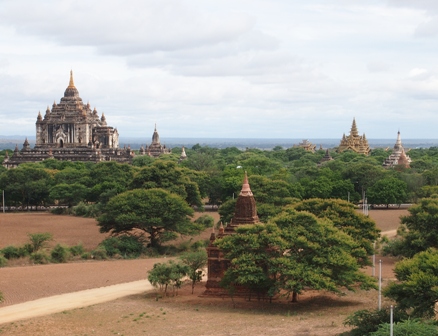
Kubla Khan
In Xanadu did Kubla Khan, A stately pleasure-dome decree:
Where Alph, the sacred river,
Ran through caverns measureless to man
Down to a sunless sea.
So twice five miles of fertile ground
With walls and towers were girdled round;
And there were gardens bright with sinuous rills,
Where blossomed many an incense-bearing tree;
And here were forests ancient as the hills, Enfolding sunny spots of greenery.
In 1287AD, Kublai Khan, the rampaging Mongol military genius who conquered most of Asia including Myanmar, brought an abrupt end to Pagan’s dominance.
Depopulated and forgot the former capital slumbered for centuries in almost total obscurity.
The great temple city became a ghost of its past, crops of sesame and peanuts subsumed royal roads, while ornate pagodas and simple mud brick houses alike dissolved under monsoon rains, leaving behind merely the memory of former glory.
Only the sturdiest stone and brick temples remained (over 3,000 by some counts), scattered over a wide area along the east bank of the Irrawaddy River (Sacred Alph stand-in) amongst the russet dirt fields, tiny villages with hard scrabbling farmers and ‘thanaka’ tree groves.
Had Kublai Khan stayed to establish Pagan as his new empire’s capital, present history may have turned out differently.
Now Pagan is Myanmar’s global tourism drawcard, a sight unlike any other in Asia, including Angkor Wat, Borobudur and Anuradhapura.
Unlike many tourism drawcards which can be disappointing when seen firsthand, Pagan is endlessly fascinating. I could easily have spent weeks there lost in a wondrous mental haze wandering amongst forgotten temples, my own meandering motion, echoing Coleridge’s poem.
But there’s a boat waiting and I’m a passenger on it. The RV Orient Pandaw is heading upriver from Pagan to a small village past Mandalay and I can’t afford to miss my ride.
Sadly, only a few days in Pagan was all I had spare, the facts of travelling to a timetable not of one’s own making.
When time is limited in such a wonderful place, best to make the most of it.
One afternoon eight other passengers and I visited the tiny West Pwasaw farming village, hidden away amongst the thousands of historic sites in Pagan, where life is rustic and simple.
Previous visitors donated enough money to build a communal well. Water is collected each day and transported to villagers by manpower or bullock cart. Nine of us donated enough money to keep the village well pump operating for a further ten days.
Karma is a concept all travellers are wise to recognise. As the saying goes, ‘What comes around, goes around…’
I found this village so entrancing I wanted to stay there indefinitely, learning the language, sharing local gossip all the while forgetting life’s endless supply of conundrums.
Was I experiencing a common travel fantasy? Certainly I did.
Blame it on the mystique of Pagan, where the time continuum seems magically altered.
Small ship expedition cruising is to a naked hungry traveller what Italian white truffles are to… well, a naked hungry traveller. They appeal in equal measures.
The RV Orient Pandaw’s 20 cabins are occupied by merely 27 passengers on this season’s first cruise up the Irrawaddy River. 46 crew members are in attendance. Not that so many are needed for the requirements of so few passengers. Apparently a third are newbies, apprentices learning the boat’s ropes and they’re excited as the passengers to be on board.
We’re a happy bunch of travellers on a slow boat up Myanmar’s lifeline, the river of many footsteps, constant giver of all things from famine and plenty to tragedy and joy.
Stopping in Pakokku for a half day’s wander in this large market town halfway between Pagan and Mandalay allows a brief glimpse into life off the tourist trail.
There are no significant tourist sites in this ramshackle place and it’s really all the better for it. People wave almost in unison; as if they’re expecting Potemkin himself to approve their public works and maintenance program. The entire experience becomes utterly captivating.
I got caught up and lost track of time in the market, browsing the variety of foodstuffs, tools, kitchen implements, textiles, clothing and craft works. While chatting to one man whose facility with the English language reminded me of the formality used by George Orwell in his first book, ‘Burmese Days’, (a few elderly Myanmar people I met spoke English as if it was taught by a 1950s BBC news announcer) nearly married me off to three separate stall holders he claimed were his granddaughters. For a brief moment I was the centre of attention in a small world. If such moments as these are what perfect travel experiences are all about, I’m happy to play the part of available rootstock. The laughter and sharing are what matters most.
The following day we moored at Yandabo village, a speck of a place in the middle of nowhere on the eastern bank of the Irrawaddy.
Strong yet malleable clay is found in these parts and the families comprising the village’s entire population are apparently involved in terra cotta pot making.
It’s a big business and the townspeople make a decent living from their hard work.
All done by hand, the work is not about dabbling with figurines. Instead various jobs become specialties. Women tend to throw the best pots. I watched one expert potter create four in twelve minutes precisely. She made one pot each three minutes, her assistant, perhaps her husband, I never found out, operated the pottery wheel by foot, his constant backwards forwards movement on the foot pedal was rhythmic. He appeared napping while working the treadle. Ms. Potts grabbed a whopping great handful of clay from a nearby mound, threw it on the wheel and within three minutes she sliced the perfectly formed pot free with a bit of wire strung between two sticks and gently moved it to a growing stack of exactly the same sized and shaped pots, ready to be slid into the kiln, fired and then sold up and down the river.
The Pandaw Foundation supports an elementary school in Yandabo, which we were invited to visit.
The students sang songs in English for us while a quartet of fellow guests sang popular kids songs in English in turn. I’ll never hear ‘The Wheels on the Bus Go Round and Round’ in the same fashion ever again, nor do I want to but I was captivated by those kids.
Visitors to Myanmar are encouraged not to give money or sweets to kids. It’s important for them to avoid associating foreign guests with free money, like walking ATMs ready to dispense treats without so much as a ‘You give money mister’ and no thanks as a reward.
The good people of RV Pandaw Cruises have developed a fruitful, mutually beneficial relationship with this particular school. The school receives badly needed funds while passengers are allowed an opportunity to engage with local kids without any perceived social stigmas attached.
We all contributed to a significant donation that helps the school buy books and uniforms for its students. The interaction was all honest, above board and transparent. While in Yangon the previous week, I was informed that some schools accept donations while not necessarily forwarding the cash to benefit the students themselves. Instead the money is siphoned off by the principal or school managers. In a country where corruption is as prevalent as rain during the monsoon, it’s best to verify where your money goes before donating it.
Back on board the RV Orient Pandaw, the boat continued its stately progress up the muddy Irrawaddy.
Each cabin faced outwards, rattan chairs positioned directly outside the cabin door. The top deck bar and veranda was by far the most popular hang-out spot. By late afternoon, cocktail hour beckoned guests like bears to a honey pot. Who could resist a gin & tonic or Mojito made with local rum? Or an icy cold Myanmar beer?
The view from high atop the RV Orient Pandaw upper deck was endlessly mesmerising. Occasionally the Irrawaddy was seemingly all at once busy with heavy barges, crowded passenger ferries, jumbles of tied logs floating downstream destined for dismemberment at the timber factory or charcoal plant, small fishing boats, nets strung fore to aft or houseboats filled with local families whose lives are bound to the river’s flow. Rafts of floating vegetation swept by looking like small green islands constantly on the move. Mostly we were alone in a vast river, in places several kilometres wide, fishing birds soaring overhead our only company.
As the river’s depth changes with the season, varying up to fifteen metres depending on the monsoon rains, the shipping channels alter course constantly. Only experienced captains run larger ships up and down the Irrawaddy while local pilots were ferried on board to help navigate particularly challenging flows.
Occasionally groups of temples rose up from steep banks gleaming in bright sunlight. Wealthy temples invariably sported gold at the tips of their stupas and lit up like burnished stars when the rays struck the spires.
Mostly however, the scenery was a constant moving feast of neatly tended pastures, tiny villages in the near distance or forested mountains hanging in the far distance.
The crew were a microcosm of Myanmar. Several had worked at resorts in Thailand where their cocktail making skills were polished. Others had never been outside Myanmar.
What they all had in common was completely and transparently natural friendliness. Not a skerrick of forced bonhomie, not a touch of ersatz ingratiation. Everyone did their jobs well, always happy to do it.
Given the remote locations where supplies weren’t readily available, I was genuinely surprised at how tasty the food was. One of the chefs clearly understood how to create feathery light pastries; a small miracle considering how hot it was outside and how doubly hot it must have been in the galley where butter would melt instantaneously.
This was the only cruise I’ve ever been on where I didn’t feel the desire to dine off the boat at least half the time. Had I wanted to, it would have been difficult as restaurants in rural Myanmar are non-existent. Lucky me the food on board was always fresh, interesting and well prepared, a mixture of Myanmar, Thai and European dishes comprised the menus.
Away from Pagan and Mandalay, we moored overnight in completely isolated places. Tied to convenient trees standing sentinel in ploughed fields, people appeared from nowhere to observe the curious sight of a big boat being tied up near their village and then disappeared into thin air. No roads could be seen from our mooring. No vehicular traffic noise, only the barking of dogs and the occasional lowing of a water buffalo for nocturnal auditory company.
On two separate evenings we were treated to a puppet show and a dance performance. Myanmar artists are renowned for their puppetry skills. The marionette show was a delight.
The dance performance was also a lot of fun while affording us greater insight into Myanmar traditions linked to early Hinduism.
Around Mandalay is Myanmar’s centre of history and tourist sights.
We spent a half day at Sagaing where over 5,000 monks and nuns live in Buddhist harmony. As the country’s premier meditation destination, it’s a quiet place. The views overlooking the river imbue a natural hush.
Across the river from Sagaing is Ava or Amarapura, a capital of old Myanmar for over four hundred years. It held sway over Myanmar after Pagan’s end and before King Mindon founded Mandalay in 1857.
Ava (Innwa) is an island filled with past reminders, quiet as a ghost town, which it is not despite the local superstition. Accommodation options on the island are sparse so it’s become a day tripper’s destination from neighbouring Mandalay.
Horse drawn carts meet passengers at the single ferry wharf for a few hours gentle clop-clopping around the main temples and remnant city walls. Taking in Ava’s many historic sites provides a lovely way to spend an afternoon.
Also near old Ava is the famous U Bein footbridge. Touted as the world’s longest foot bridge made entirely from teak wood (1.2 kilometres) , it’s now something of a meeting place for local lovers looking for a tryst.
The Taungthaman Lake over which the bridge extends is shallow and warm. Small boats are paddled by Mandalay’s version of gondoliers (Hnge in Myanmar), a diversion of extreme pleasure, albeit entirely tourist-y. Paddling amongst the fisher folk and smitten lovers as sunset lowers over the lake is delightful, if innocently voyeuristic.
Upriver one hundred kilometres north the Pandaw stopped at another terra cotta village, Nwe Nyein (Kyauk Myoung). Here the pots are giant sized and the manufacturing is, as in Yandabo, all done by hand and clearly very labour intensive.
Pots strewn along the river await shipment. Though the town appears sleepy during late monsoon heat, local inhabitants work constantly forming the pots that are famous throughout Myanmar.
I’ve seen copies of these pots in Australian garden centres; they make fine outdoor plant holders.
Returning to Mandalay after a day travelling up and down the river to Nwe Nyein, we stop at Mingun, forever remembered as the place where the ‘greatest pile of bricks’ can be found. When King Bodawphaya began construction of this enormous temple in 1790, it would have been the largest in the world had he not fallen ill and died. An earthquake in 1838 split the temple in two and rendered it forever unfinished.
Nearby is the also very large Myatheintan Pagoda, described as a Myanmar version of the Taj Mahal as it was built in 1816 by Crown Prince Ba Gyi Daw to commemorate his favourite princess, Sinbyume.
Mingun’s single main street paralleling the riverbank has developed without formal intention into a short row of private art galleries. Good prices are found here, a place in which to buy original Myanmar artwork that costs much more in Yangon or Mandalay. Remember that antiques cannot be taken out of Myanmar and that not all artworks are unique. That being said, judicious shopping may discover an artist on the path to fame and fortune. There’s real talent to be seen in a few of Mingun’s local artists.
The cruise ended in Mandalay, a city that conjures up exoticism to many people who’ve had their own private dreams of Kublai Khan. This was Myanmar’s last royal capital city, famous for never having its name changed by colonial powers, famous for witnessing the end of an era as Myanmar was overrun by Japanese forces (whose airplanes bombed the old walled city into oblivion). When the republic was declared as separate from British rule in 1948 under the guidance of the national hero, Aung San, father of another national heroine, Aung San Suu Kyi, the capital of new Myanmar became Yangon until it was moved again to Naypyidaw in 2005.
The country’s second largest city, it’s now famous as a bastion of conservative Buddhism, the gateway to the north and its relatively easy access to the dubious riches of modern China, in essence awaiting interchangeable exploitation.
As a crafts-maker city, it is unrivalled. Goldsmiths, silversmiths, stoneworkers, marble sculptors, wood carvers, basket weavers, cloth weavers and small scale food producers are everywhere. Lacquer ware is also a Myanmar specialty. The best lacquer ware artisan shops are found in Pagan and Mandalay.
The country’s second most important Buddhist shrine (after Shwe Dagon in Yangon) is the very impressive Mahamuni Pagoda located in central Mandalay. It’s a very holy place where all local devotees visit regularly.
The Buddha image in the main pagoda situated in the middle of the sprawling temple precinct is growing larger as I write this. One way to reach Nirvana via the faster road greased by lustre paid in cash is by rubbing a sheet of gold leaf on to the Buddha image. Only men are allowed this special privilege. (Sexism being customary across all religions is also a universal misfortune.) So much gold leaf is applied to this Buddha image that he is actually growing bigger. In my eyes, he looks like a fat bloke wrapped in a gold bubble suit. Sort of like a giant gold Michelin man. Pardon any sacrilegious inference here but this kind of completely wasteful ‘idol worship’ unnerves me.
Remember to be dressed appropriately or entry to the sacred inner shrine will be refused. For men no short shorts or singlets and for women no short skirts or bared shoulders are allowed. All shoes must be removed before entry as well.
Fortunately one of old Mandalay’s fabulous wooden temples survived the Japanese bombs as it was removed from within the old city walls to its present location in central Mandalay. The Shwe Nan Daw Kyaung or ‘Golden Palace’ monastery is a stunning reminder of how skilled local woodcarvers were and indeed are today. This place is truly a must see when visiting Mandalay. It’s popular with foreign visitors so choose your time wisely to avoid crowds.
High up on Mandalay Hill is another important temple. The sunset views from here are quite simply remarkable. Local students linger on the hilltop to engage with foreign visitors. They benefit from the chance to practice their language skills (English mostly) and visitors benefit from a chance to interact with people outside the tourist bubble (i.e. hotel staff, taxi drivers, waiters, etc).
I was a guest of two Grasshopper Adventure tours, one half day ‘Tea Shop’ tri-shaw tour and a half day ‘Motorbike Tour’ to the city’s rural outskirts.
I can’t recommend them highly enough. Both tours gave me insights into Mandalay life that I would simply never have discovered on my own, which is to say it would have taken me months of hard work and research to discover what I saw in a single day organised by people who really know what they’re doing. As a tourist exercise, the two tours were perfection.
The ‘Tea Shop’ tour took me to a home noodle factory, the city’s best tempura stall (it’s a wholesale shop tucked away in a side street near the Hotel on the Red Canal), the city’s best food market (Nan She or Eastern Market), the city’s best cafe (Shwe Le Ya ‘Golden Cooking’) where a fine bowl of mohinga (Myanmar fish soup) is served, the city’s best tea leaf salad cafe (Yee E. Don) and the city’s best cold drinks stand (also named Shwe Le Ya ‘Golden Cooking’ at the corner of 70th and 28th streets) and the city’s best tea and coffee house (Shwe Pyi Moe near the Sedona Hotel opposite the old city walls on 66th Street). My guide Lu Wine has a profound knowledge of Mandalay’s best places in which to eat authentic Myanmar food. He was absolutely charming, interesting company and great fun.
Seen from the passenger seat of a tri-shaw, everywhere becomes more visible, shapes are clearly delineated and life is seen from up close and personal rather than distant. Instead of whizzing past in a cocooned air-conditioned car or coach, peddling along a busy street or quiet back alleyway is like being given a special lens into reality.
About a kilometre from my hotel where I was to be dropped off in preparation for the afternoon motorcycle tour, I convinced my guide and driver to let me have a go peddling the tri-shaw. I don’t think the driver had ever sat in the passenger seat before. He almost shouted aloud when I veered close to a parked car or two. His perspective was derived from the driver’s seat, not the other way round. I didn’t hit any moving vehicles, or stationary for that matter, avoided colliding with pedestrians and water buffalo carts, children and dogs. Peddling two passengers (the driver and my guide) wasn’t the hard work I was expecting though I was drenched in perspiration when we reached the hotel. That being said, the brakes were a bit dodgy so I didn’t speed along the alleyways and streets. Hot days in Mandalay are not made for amateur tri-shaw drivers.
I was advised by both my passengers not to give up my day job.
My last afternoon in Mandalay, my last day in Myanmar in fact, was spent on a motorbike riding the rough and rugged muddy tracks of the city’s rural outskirts.
My driver Soe Min Oo was terrific fun. We visited a tofu factory and a village with a prominent Nats (indigenous pagan spirits) shrine, rode through rice paddies spread against gloriously green countryside.
A stop at a toddy wine shop in a rice paddy was altogether different, a place I would never have discovered without a guide. Actually without a guide, I probably wouldn’t have been very welcomed. We sat at a wooden bench drinking from odd mugs, picking at bits of barbecued goat meat on sticks and eating overripe bananas. The toddy was cloudy and slightly fizzy, freshly fermented. Had I drunk a bit more I would have begun reciting from the Coward songbook, ‘to dine on yams and clams and human hands and vintage coconut wine, the taste of which was filthy, the after-effects divine…’ (Uncle Harry)
Our last stop for the day was Mandalay Hill. Sunset spread flames of light across the flooding landscape. The monsoon rains had drenched the north expanding the Irrawaddy to reach its widest banks. The fabled river seen from above the mystical city struck me dumb with pleasure.
The river had been my constant companion from Yangon all the way up to Nwe Nyein and now it presented my last best view on this trip to Myanmar. From high atop Mandalay Hill, I could not have chosen a better place to say farewell, until we meet again.
Tom Neal Tacker travelled as a guest of RV Pandaw Cruises and Grasshopper Adventures.
Naked Facts:
Visitors to Myanmar are required to obtain a visa before entry. Contact the nearest Myanmar Embassy.
Pagan can be reached by air from Yangon. Since the by-elections in 2012, Myanmar has seen rapid growth in its airline industry.
Frequent flights connect Pagan with Yangon and Lake Inle. Pagan by road from Mandalay takes approximately four hours.
Mandalay is served from Bangkok by daily flights with Thai Airways, (www.thaiairways.com) and Bangkok Airways (www.bangkokairways.com)
For information about RV Pandaw Cruises in Myanmar and other southeast Asian countries, see www.pandaw.com
For information about bicycle and photography tours from a ground up perspective, see Grasshopper Adventures www.grasshopperadventures.com
Naked Sleeps:
The Hotel by the Red Canal is a boutique luxury hotel (with a swimming pool, a rarity in sweltering Mandalay), a well run establishment with a good Indian restaurant attached. The location is terrific, close to the old city and near the city’s best shopping streets. Formerly the Chinese Consulate, the rooms have been completely renovated (spy cameras removed). All vestiges of boring Chinese bureaucracy have been erased. Wi Fi is free and fairly reliable. See www.hotelredcanal.com
The Ma Ma Guest House run by the dynamic mother and daughter duo Alice and Sue is very friendly and reasonably priced. Rooms are large, very clean and airy. The guesthouse has all mod-cons, is situated in a convenient part of town close to the central business district. Best of all both Alice and Sue speak fluent English, are absolutely lovely people who understand the true meaning of hospitality. A rooftop restaurant and bar sporting lovely city views was scheduled to open at time of publishing. Highly recommended. See www.mamaguesthouse.com for more information and bookings.
Naked Tips:
Our wonder guide on board the RV Orient Pandaw was the inestimably charming, learned and talented San Lin Tun. What San doesn’t know (or feel) about Myanmar isn’t worth knowing. His candour and honesty are truly impressive. Myanmar politics is a nasty business. Not long ago, Myanmar people were locked in prison for speaking the truth about corruption and dishonesty. San’s patient explanations about Myanmar’s recent history and politics were very helpful and revealing.
While contracted to RV Pandaw Cruises, San also works as a freelance tour guide.
He’s also a talented photographer and has self-published a marvellous book of his pictures of the ‘Golden Land’. As a remembrance of Myanmar it’s invaluable. As a gift, it would be heartily appreciated. Priced at less than USD$20.00, shipping at an extra cost dependent on location, it’s a bargain. Contact San Lin Tun via email to order a copy: sanlintun74@gmail.com

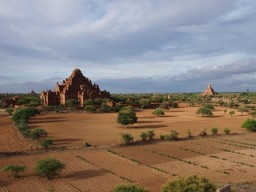
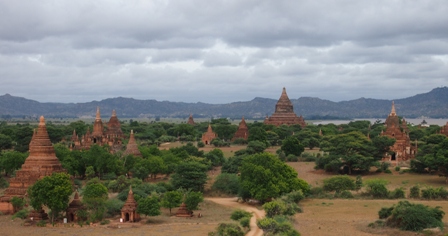
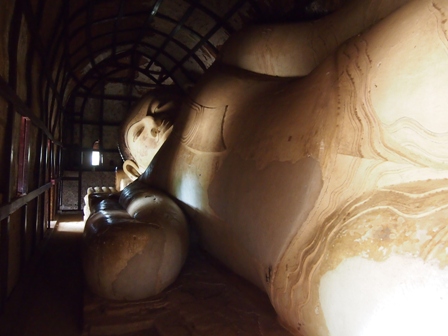


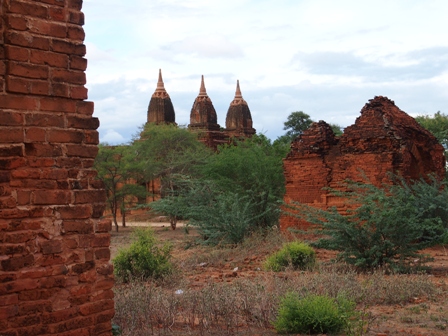
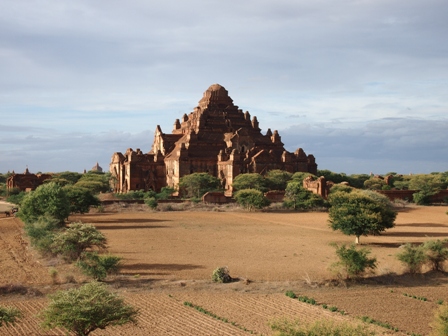
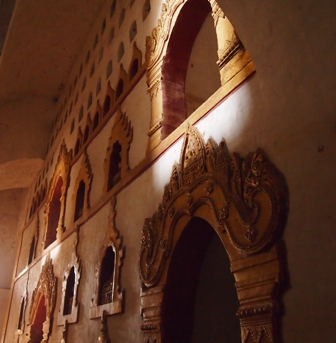
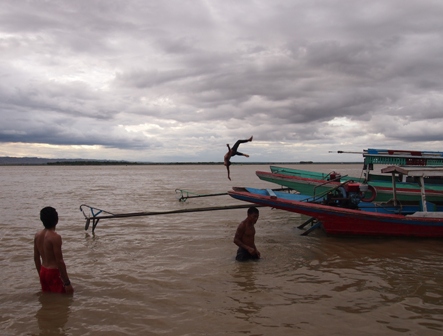
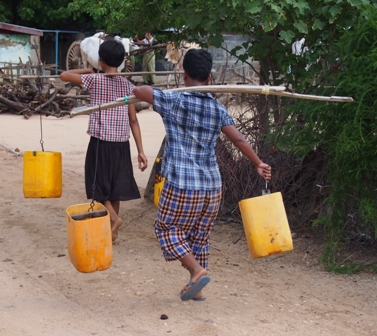
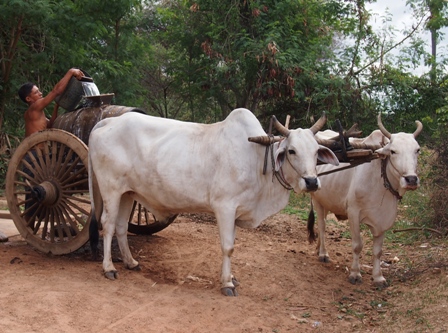
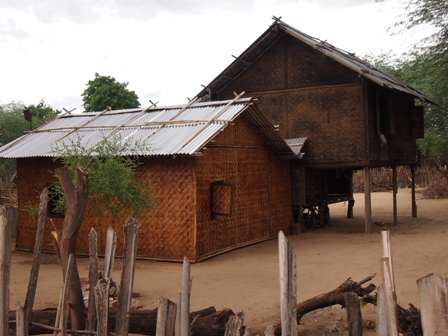
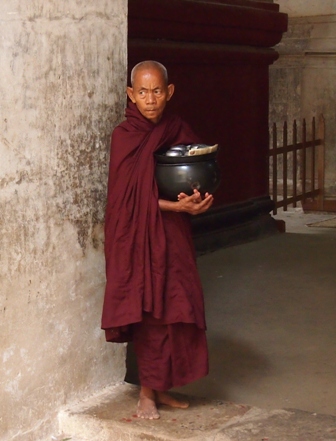
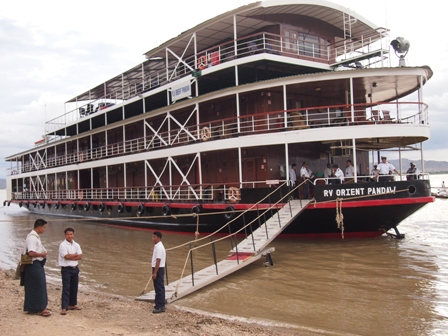

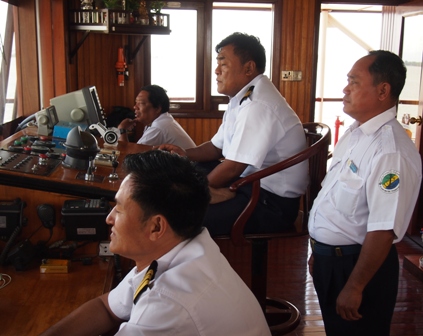
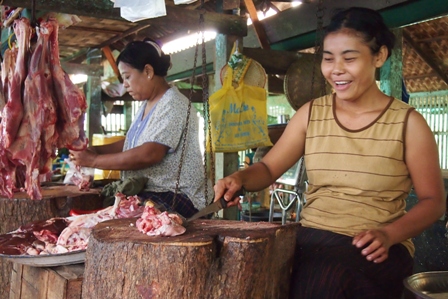
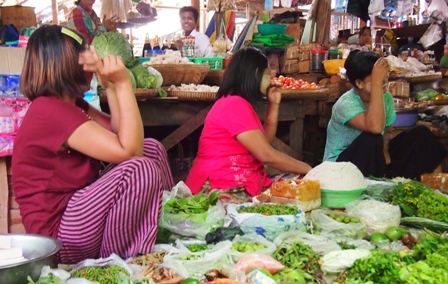
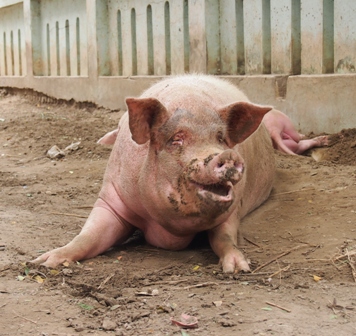
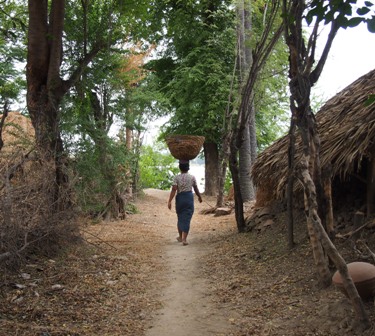
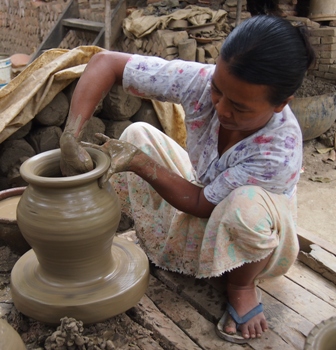
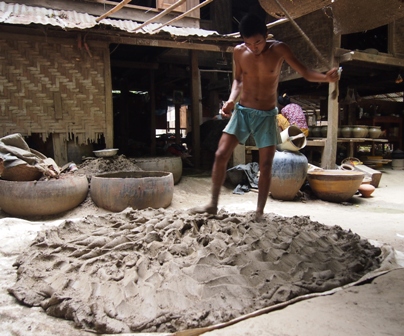
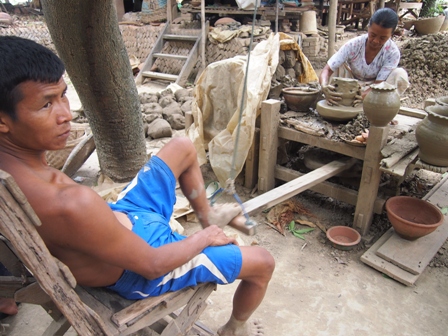
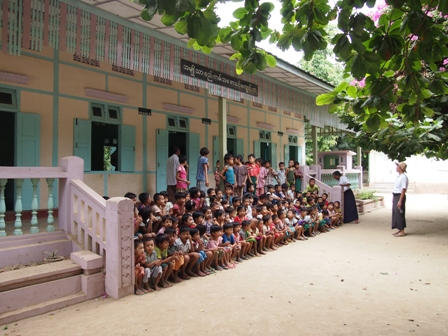
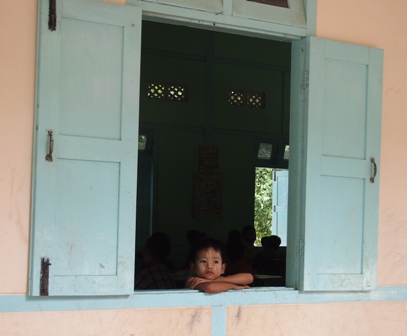

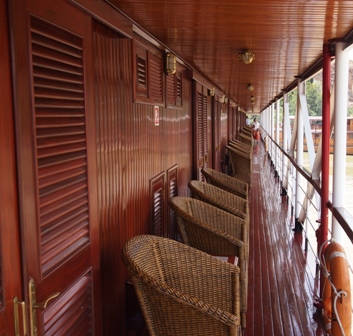
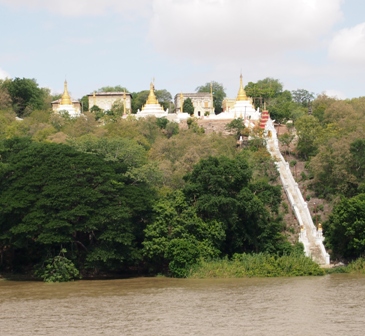
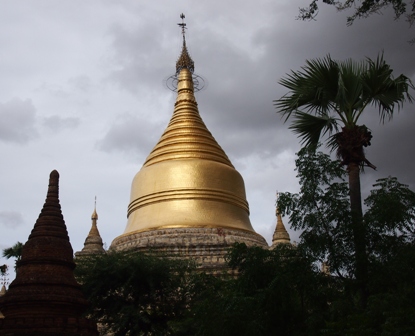
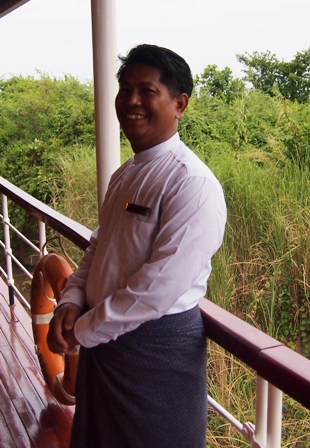
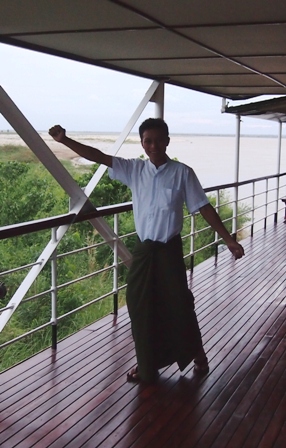
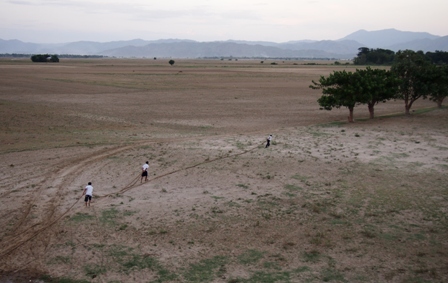
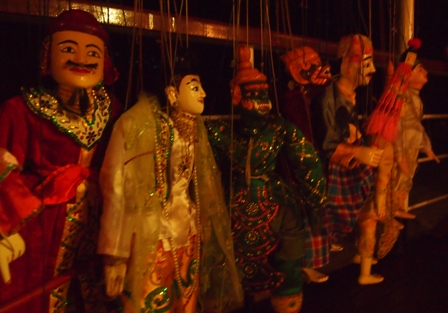
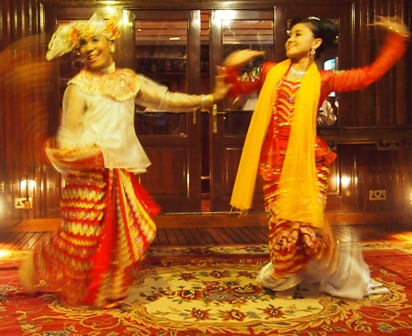
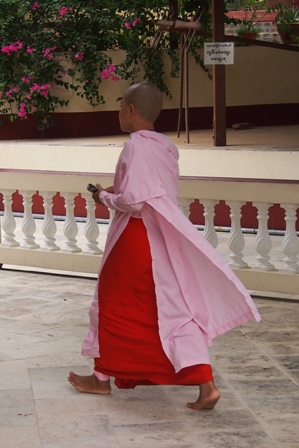
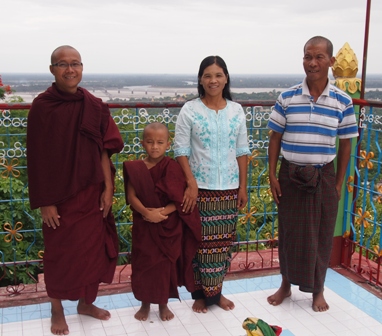
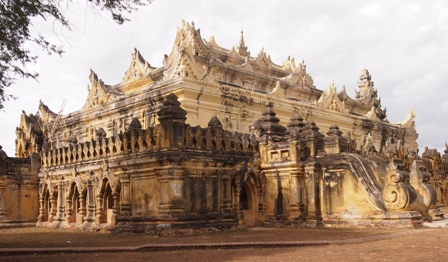
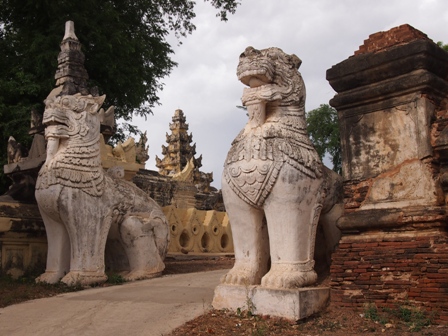

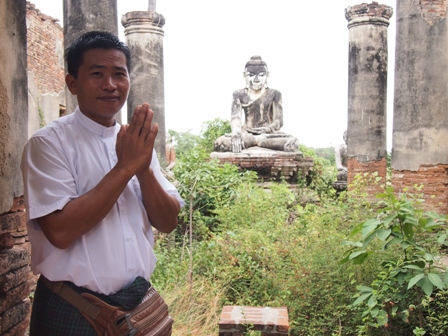

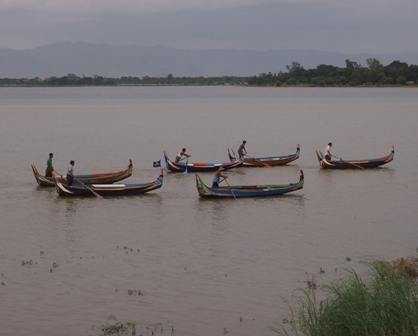
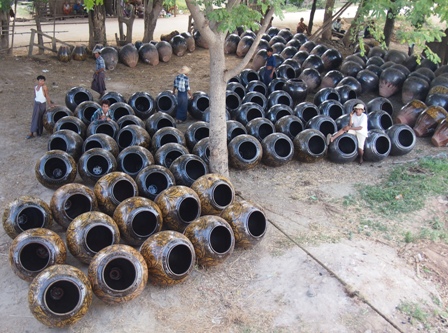



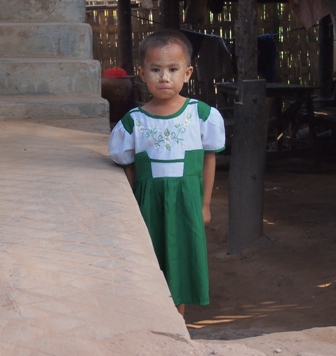

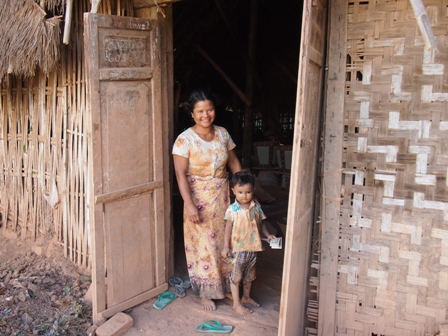
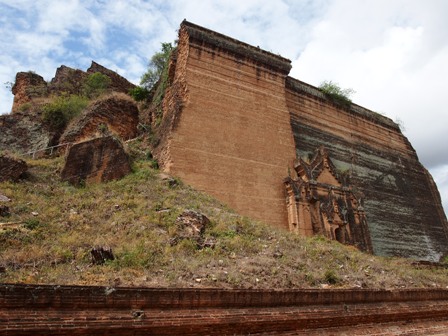
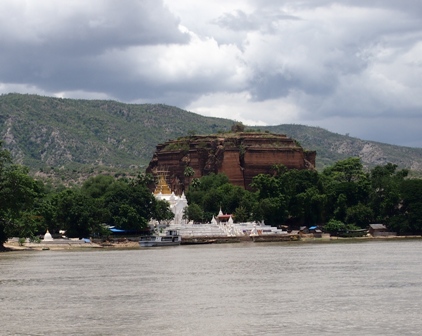
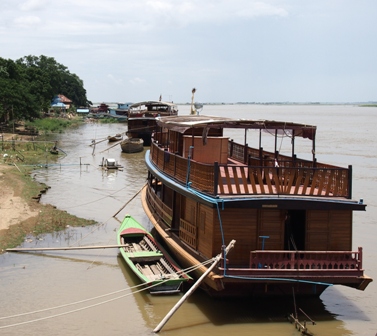
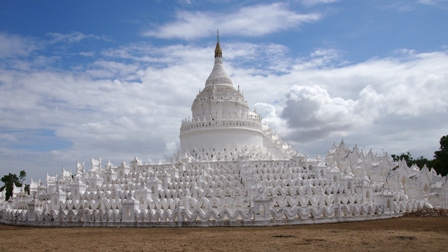

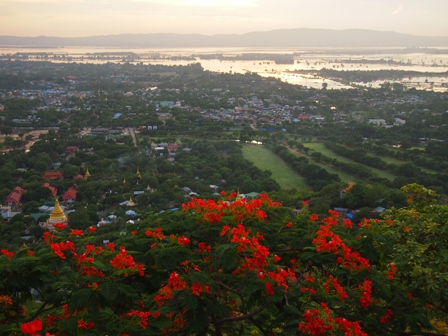
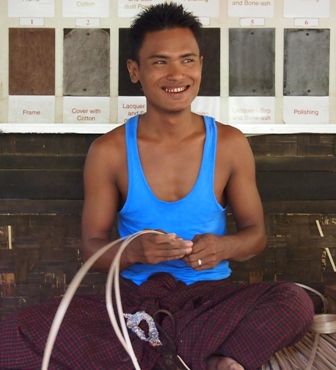
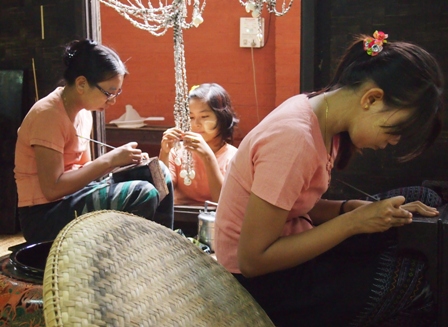
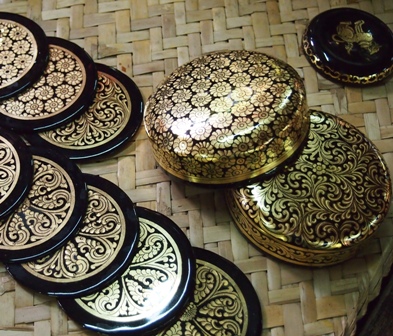

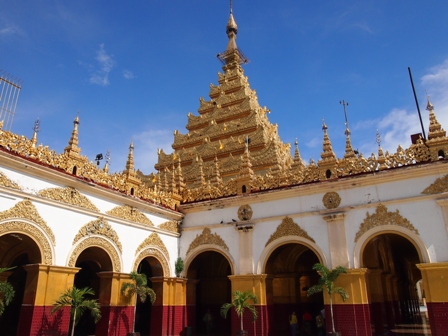


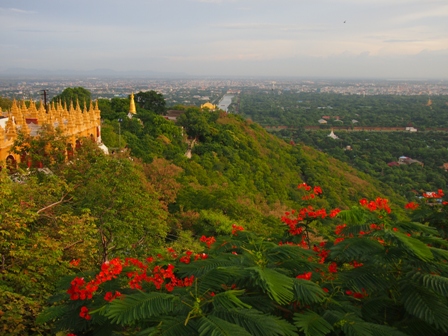
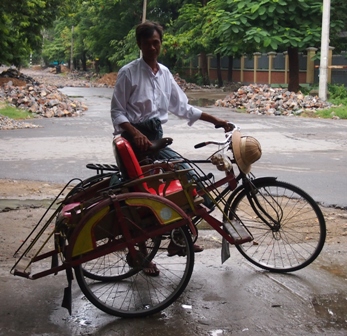
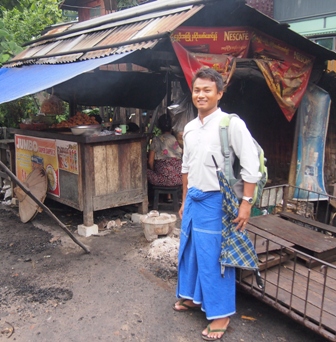
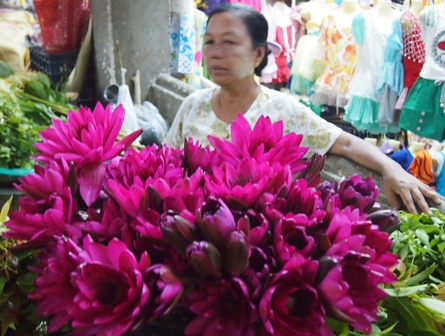
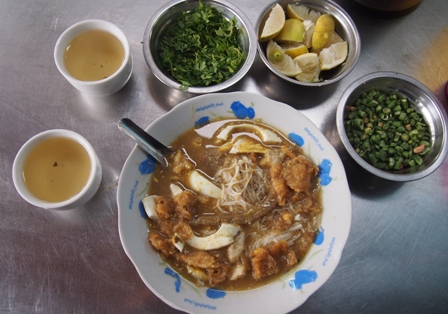
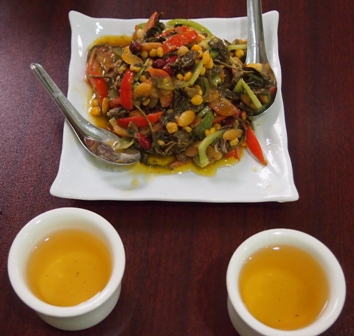
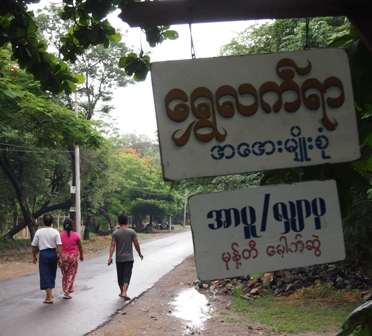
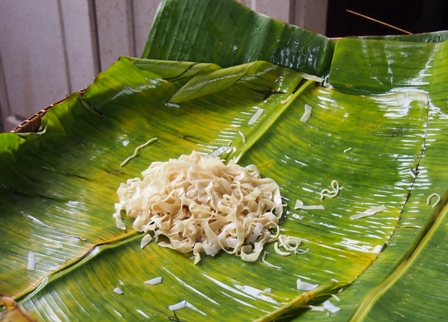
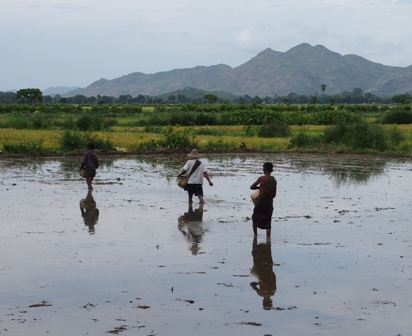
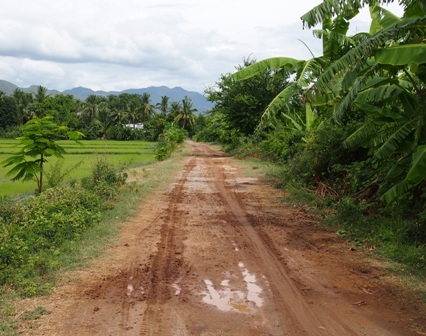
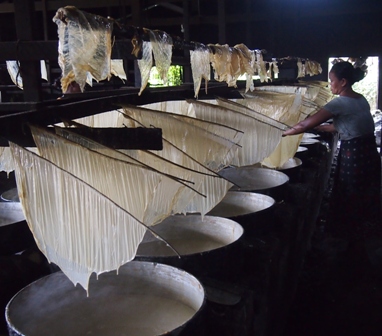

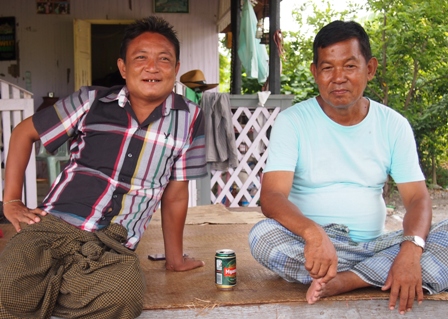
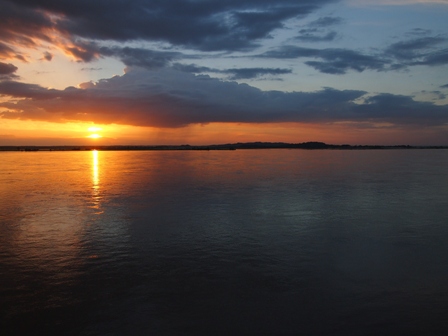
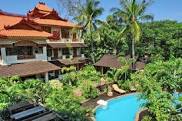
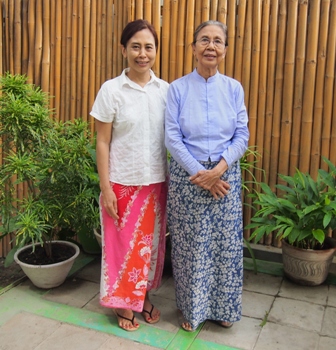
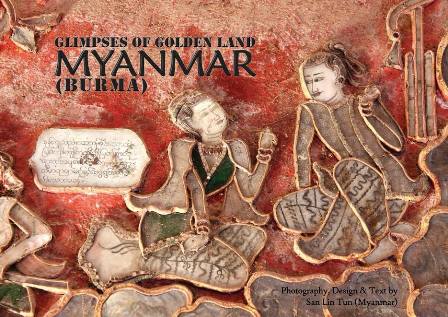
An ‘express’ ferry service runs between Bagan and Mandalay . Following the Irrawaddy river the fastest ferry takes around 9 hours to travel the 170 kilometres. The service runs daily during peak periods and slower sailings with overnight stops are also available.